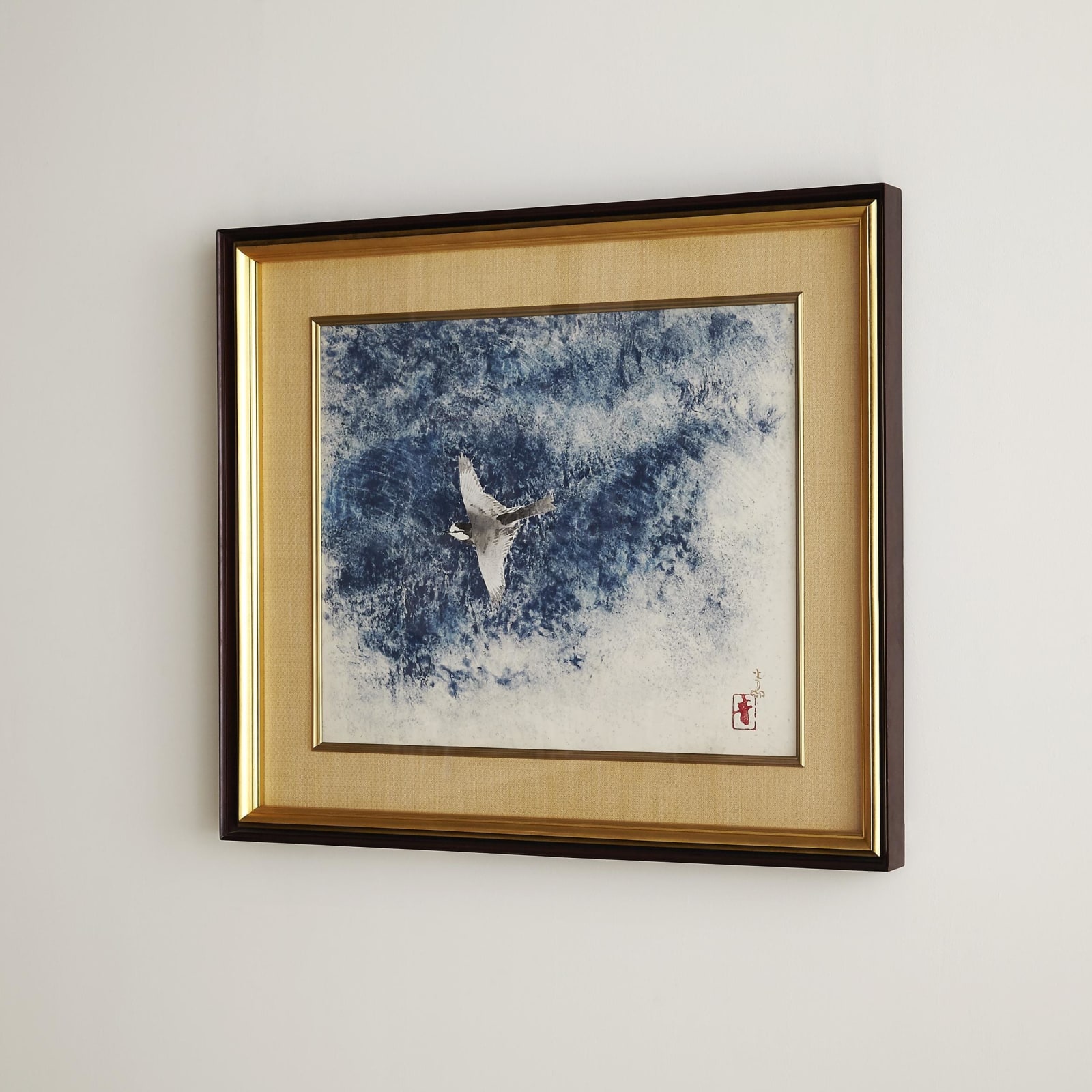Maeda Seison (1885−1977)
Wagtail
Color on paper, framed (20F)
With a box signed by the artist
Seal: Sei
59.4 x 71.4 cm
87 x 99 cm (overall)
Further images
The use of ultramarine in this painting is distinctive of Maeda Seison, despite more restrained than that in other well-known works, such as the 1944 Torrent, the 1956 Carp, and the 1968 Daimotsu-no-ura. Although there are no great difference in the expression of the shade of the color, the mixture of shell white (gofun) and the pigment creates a different tint in the present work.
The motif of birds skimming low over the water is also found in a 1959 Seison painting Senbazuru, literally “a thousand cranes”, depicting thirty cranes flying above the water’s surface. The present work is of nearly the same composition but larger size with another work also titled Wagtail by Seison in the Yamatane Museum of Art collection. The white section at right bottom in the present work is larger than that of the Yamatane painting, perhaps to suggest the movement of white waves brought by stronger wind. Apart from white and black, with his sophisticated technique, Seison only applied blue in this painting to realize this subtle yet complicated representation.
Maeda Seison (nihonga painter; 1885–1977)
Gifu-born nihonga painter. His real name is Renzo. A student of Kajita Hanko. A member of nihonga societies Songa-kai and Koji-kai. Recognized as three exceptional painters at Inten (Japan Art Institute) together with Kobayashi Kokei and Yasuda Yukihiko. Particularly excelled at history, figure, and kacho (flower-and-bird) works. His work features refined lines and the tarashikomi (dripped in) technique. Member of Teikoku Bijutsuin (Imperial Fine Art Academy), an Imperial Court Artist, and a Nitten (Ministry of Education Art Exhibition) juror. Appointed Tokyo University of the Arts professor. Designated as a Person of Cultural Merit, and received the Order of Culture.
The motif of birds skimming low over the water is also found in a 1959 Seison painting Senbazuru, literally “a thousand cranes”, depicting thirty cranes flying above the water’s surface. The present work is of nearly the same composition but larger size with another work also titled Wagtail by Seison in the Yamatane Museum of Art collection. The white section at right bottom in the present work is larger than that of the Yamatane painting, perhaps to suggest the movement of white waves brought by stronger wind. Apart from white and black, with his sophisticated technique, Seison only applied blue in this painting to realize this subtle yet complicated representation.
Maeda Seison (nihonga painter; 1885–1977)
Gifu-born nihonga painter. His real name is Renzo. A student of Kajita Hanko. A member of nihonga societies Songa-kai and Koji-kai. Recognized as three exceptional painters at Inten (Japan Art Institute) together with Kobayashi Kokei and Yasuda Yukihiko. Particularly excelled at history, figure, and kacho (flower-and-bird) works. His work features refined lines and the tarashikomi (dripped in) technique. Member of Teikoku Bijutsuin (Imperial Fine Art Academy), an Imperial Court Artist, and a Nitten (Ministry of Education Art Exhibition) juror. Appointed Tokyo University of the Arts professor. Designated as a Person of Cultural Merit, and received the Order of Culture.







